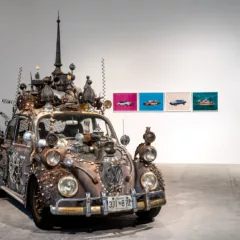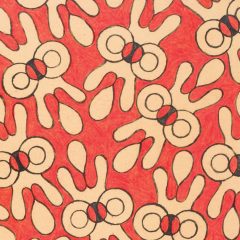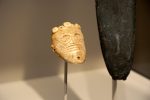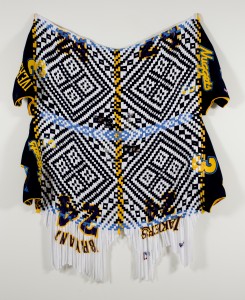
The National Museum of the American Indian (NMAI) consistently embeds its exhibitions in the reality of contemporary Native Americans’ lives but until now it hasn’t been a place to find contemporary art exhibitions. Brian Jungen; Strange Comfort, on view at NMAI through Aug. 8, 2010, is a spectacular start. Jungen’s recycling everyday objects manages to delight and discomfort at the same time as it provides critiques of everything from stereotypes of Native Americans, the culture of celebrity, the global economy of cheaply-manufactured goods and the tourist economy to the narrow vision of the art world.
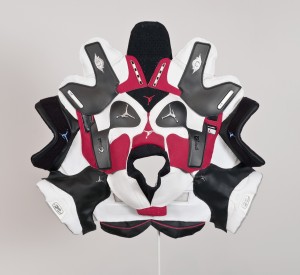
Jungen, who is Dunene-za on his mother’s side and works in Vancouver, has exhibited in international art venues but this is his first exhibition in the context of Native American culture. Jungen has said of his relatives’ reuse of everyday objects that It was a kind of salvaging born out of practical and economic necessity, and it greatly influenced how I see the world as an artist. The re-use of worn, broken and discarded objects is a given for impoverished peoples worldwide and something that artists have employed for a while. Jungen inverts the process, taking new and useful objects and converting them, by dint of his vision and craft, into objects deprived of any practical value. In his hands garbage bins, football jerseys, plastic lawn chairs and second-hand clothing attain the ultimate uselessness of art.
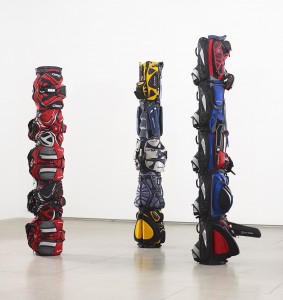
His particular conversion of sows’ ears into silk purses is a multi-layered enterprise. Jungen’s versions of Northwest coast masks and woven blankets have prototypes whose current functions in the indigenous community are economic; Jungen recreates neither traditional household goods or cult objects but their forms translated into tourist goods. Tourist art has been of interest to anthropologists for a while but so far has been beneath the radar of art historians and museums. The commodification of their traditional culture based on outsiders’ romanticism is a mainstay of the Native American economy. Jungen emphasizes that everyday life for First Peoples is more likely to be filled with plastic goods made in China than with handmade, traditional objects.
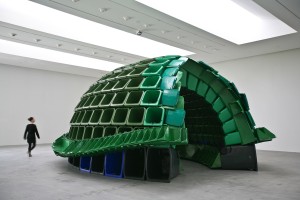
Jungen’s work is also deeply-embedded in contemporary art and suspicious of formalism as an ultimate value. Carapace is a structure the size of a large tent, made from green industrial waste bins and resembling the abandoned housing of a huge turtle. From the inside, however, it resembles nothing so much as one of Richard Serra’s Torqued Ellipses. Isolated Depictions of the Passage of Time (2001) consists of stacks of plastic food trays arranged into a cube; its shape derives from an actual ‘escape pod’ made by a prisoner in 1980, but the number of trays matches the number of incarcerated native Canadians. Like Hans Haacke’s U.S. Isolation Box, Grenada, 1983 it is a pointedly political work and a realistic depiction of an actual structure whose form mocks the shallowness of so many minimalist cubes.
Jungen views the world with an anthropological gaze. When asked why he employs so much sports equipment in his work he answered that sports interest him because of the tribal rituals of its followers. I’m waiting for him to take on the tribal rituals of the art world.


